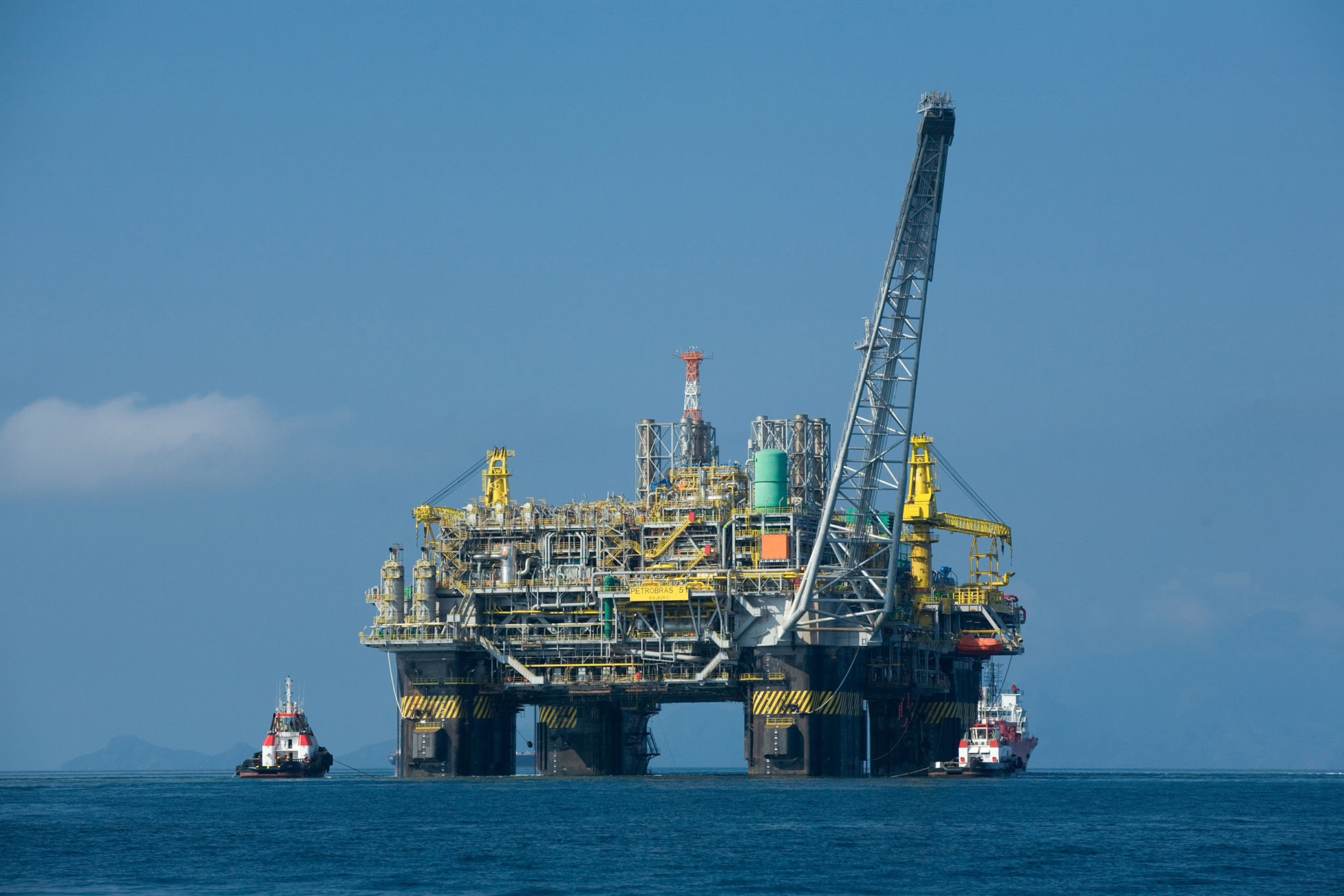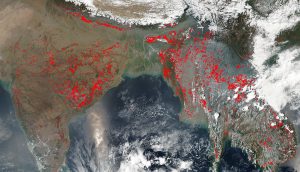As Chinese loans continue to pour into Latin American countries, concerns over how this money is being spent and how will it ever be repaid are growing on both sides of the bargaining table.
Of most immediate concern for Chinese authorities is the ability of economically unstable governments, most notably Venezuela, to pay back multi-billion dollar oil-backed loans amid the falling price of crude, globally.
Oil-backed loans with international partners are also at the heart of a political crisis in Venezuela. The government-allied Supreme Court recently took over the functions of the opposition-controlled National Assembly, which has long argued that joint oil ventures require congressional approval and without it they are illegal. The Supreme Court has since reversed the move to effectively close congress after it attracted fierce international criticism for being undemocratic.
As of the end of 2015 China held US$53 billion of Venezuelan debt. The Inter-American Dialogue, however, thinks it could be as much as US$62.2 billion. Despite Venezuela’s deepening recession China has continued to lend. In November 2016 alone, it loaned Venezuela US$2.2 billion.
Venezuela’s President Maduro thanked China in a televised speech: “Many thanks for all the support you have given Venezuela in 2014, 2015, and especially 2016. Our older sister China has not left Venezuela alone in moments of difficulty.”
But the changing global economic environment means that China cannot continue lending to Latin American countries entirely worry-free. Statistics from Inter-American Dialogue show that in 2016, 92% of China’s loans to Latin America went to Ecuador, Venezuela and Brazil. All three of these nations are facing serious economic challenges.
The Brazilian economy has been shrinking since 2014; economic circumstances in Venezuela continue to deteriorate; and in 2015 Ecuador ended 15 years of sustained economic growth.
Experts point to two challenges for future economic cooperation between China and Latin America: how can Latin American countries better use Chinese investment to bring about sustainable development; and how can China’s government and businesses make less risky and more environmentally responsible investment choices.
Oil loans around the globe
Venezuela’s economy has virtually ground to a halt and it has a rock-bottom credit rating. It is already unable to repay US$19 billion in loans that it owes to China.
Wu Guoping, a senior researcher at the Institute of Latin American Studies, part of the Chinese Academy of Social Sciences, holds that Venezuela’s economic difficulties are linked with the inherent limitations of its oil sector.
Venezuela has the world’s largest oil reserves, but produces less than 20% of Saudi Arabia’s output, as Venezuela’s oil is heavier and, therefore, more expensive to extract and refine. “It’s only profitable if the price of oil is at US$60 or higher,” according to Wu. But that hasn’t been the price since November 2014.
Venezuela repays its loans with oil an equivalent value. But the oil-for-loans contracts were signed when the price of oil was higher, and so now the country has to supply larger quantities than expected.
According to Reuters, Venezuela started to fall behind with oil shipments to China and Russia in 2016, with the national oil company Petróleos de Venezuela (PDVSA) failing to supply oil worth US$750 million that year.
As well as missed shipments and refining difficulties (China had to build a new refinery specifically for the heavier Venezuelan oil), Venezuelan oil has to be shipped halfway around the world to reach China. Given all this, Wu thinks this is too costly an option for China to use.
From exports to self-sufficiency
For Latin American countries, including Venezuela, the crucial question is how to use the loans. Kevin Gallagher, a professor at Boston University who studies Latin America, said: “China can’t be the one to trigger [more] sustainability, but if Latin America got its act together the Chinese could provide some real funding.”
Latin America is rich in natural resources, which are exported as raw materials, rather than as processed products. Loans from Chinese banks are focused on energy, mining and infrastructure.
According to Gallagher, Latin American governments mainly use Chinese loans to build infrastructure between mines and oil fields to refineries and ports – a far cry from real economic integration or sustainable development.
In Gallagher’s new book, The China Triangle, he says that the situation in many Latin American nations has led to a trade imbalance where countries rely heavily on exports. Profits made from the export of natural resources are reinvested into the extractive sectors rather than in sustainable economic and social development.
Domestic politics is a major factor in shaping the investment choices of Latin American governments. In Venezuela, the“leftist” governing party used profits from the oil sector to fund welfare policies in order to keep voters happy. The Chavez administration offered free education and healthcare, and issued occasional payments to the poor. But infrastructure such as expressways, which has a less visible impact on public welfare, was not improved during that period of economic boom.
Wu thinks that China’s economic transition is changing the structure of domestic demand for imports. For Latin America this is both an opportunity to improve its industries and a challenge to overcome.
Gallagher also told chinadialogue that if China’s transition towards a greener economy goes smoothly, it may no longer need the commodities Latin America currently supplies to the same degree.
In 2013, 9% of all exports from Latin America and the Caribbean went to China, including 15% of the region’s exports from agriculture and the extractive industries.
Investment in Latin America
The bulk of the money flowing from China to Latin America is in the form of policy loans rather than direct investment. China has lent over US$140 billion to Latin America since 2005 and is Latin America’s biggest creditor. But China accounts for less than 10% of direct investment in Latin America, and 90% of that goes to two offshore financial centres, the Cayman Islands and the British Virgin Islands.
Despite the small quantities of direct investment, a failure to do the research has still caused problems for Chinese investors. For example Chinamax, a Ministry of Commerce agency promoting Chinese investment in the Middle East, invested in Dragon Mart Cancún, a retail and residential development in Mexico. But the project was halted almost at completion, due to the felling of protected trees.
Enrique Dussel Peters, a professor at the National Autonomous University of Mexico, recently told Diálogo Chino that Chinese firms, whether state-owned or private, did not have an adequate understanding of Mexico, and that in the Dragon Mart project the Chinese firm’s local partner had failed to explain Mexican law and systems – and so the project was halted for failing to meet environmental standards.
Li Zhiguo, a lawyer specialising in overseas investment, told chinadialogue that Chinese state-owned firms are too fixated on obtaining raw materials rather than understanding local legal environments, and that they lack a mature “corporate culture.” Any of these factors can cause an investment to fail.
Wu Guoping thinks there are at least two factors that lead to Chinese firms causing controversy and incurring reputational damage when it invests abroad.
First, Chinese companies mainly invest in resources and mining, where there is a higher risk of environmental impacts. Second, investments are mostly undertaken by large SOEs in state-led economies, which means they do not face the same pressures to be competitive under market rules.
Wu thinks Chinese firms need to look deeper into what the rate of return on an investment will be. This is particularly the case when investing in infrastructure in Latin America. More in-depth research on how infrastructure is built and managed is needed to ensure both economic and social benefits result from the project.
Wu says that as China’s overseas investments expand, the competitiveness of Chinese firms in Latin American markets will increase, gradually creating a more balanced market dialogue mechanism. This would see Chinese firms earn respect as informed financial market players as well as helping avoid unnecessary investment risks on both sides.






![Arctic ice continues to melt, we must approach the challenge with some hope [image by: NASA/Kathryn Hansen]](https://dialogue.earth/content/uploads/2017/04/Arctic-ice-NASA-300x200.jpg)


